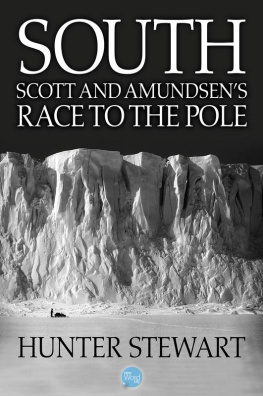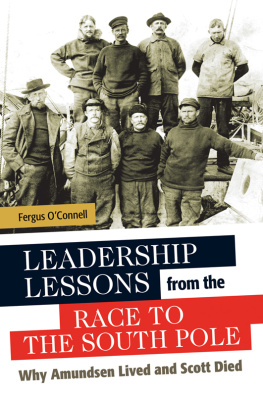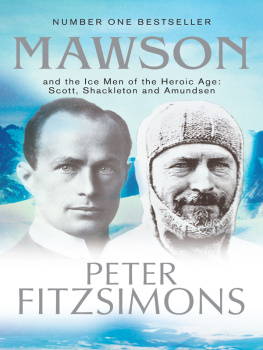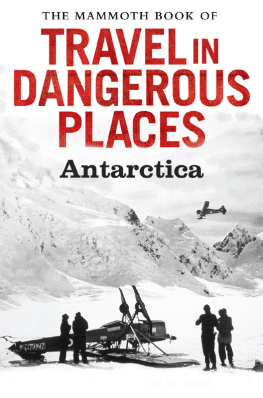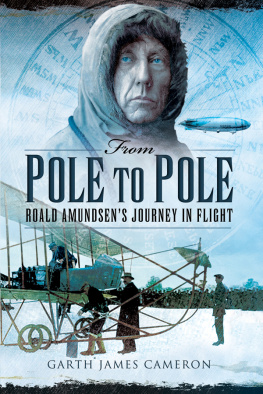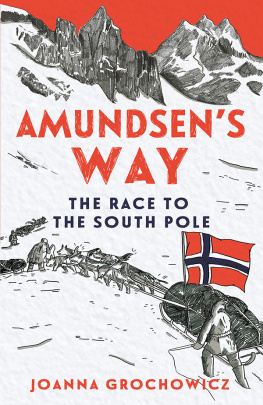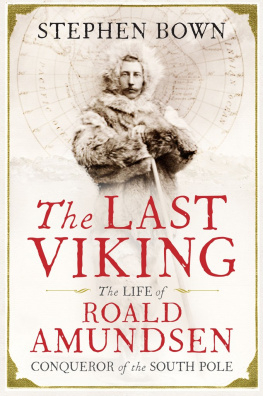
Contents
Part One |
One |
Two |
Three |
Four |
Five |
Six |
Seven |
Eight |
Part Two |
Nine |
Ten |
Eleven |
Twelve |
Thirteen |
Fourteen |
Fifteen |
Sixteen |
Seventeen |
Eighteen |
Part Three |
Nineteen |
Twenty |
Twenty-one |
Twenty-two |
Twenty-three |
Twenty-four |
Twenty-five |
Twenty-six |
Twenty-seven |
Twenty-eight |
Part Four |
Twenty-nine |
Thirty |
Thirty-one |
Thirty-two |
Thirty-three |
Thirty-four |
Thirty-five |
Thirty-six |
Thirty-seven |
Thirty-eight |
Part Five |
Thirty-nine |
Forty |
Forty-one |
Forty-two |
Forty-three |
Forty-four |
Forty-five |
Part Six |
Forty-six |
Forty-seven |
Forty-eight |
Forty-nine |
Fifty |
A s December 2011 is the centenary of him becoming the first person to reach the South Pole, it is perhaps especially timely to reflect upon the character, endeavours and continuing influence of the most successful, though not necessarily the most liked, polar explorer of all time the Norwegian, Roald Amundsen. Most of us achieve little. A few, by standing on the shoulders of giants, achieve something more. But occasionally a giant roams the Earth, and Roald Amundsen was one such giant.
However, as Tor Bomann-Larsen peels back the layers Amundsen and his supporters deliberately put in place to shield his private life from scrutiny, clues start to surface as to why and how Amundsen took on the most extreme challenges facing polar exploration and generally succeeded where so many others had failed. More than any other person in polar history, he pushed back the known boundaries of the worlds highest latitudes. Bomann-Larsen reveals a troubled, if not tortured, man behind the scenes, both at home and at work, which inevitably compromises his heroic reputation. It seems he was all too human.
That he beat Captain Robert Scott to the South Pole is widely known. That he was also the first to reach the North Pole albeit by air is not. His complete list of polar achievements never has been, indeed never can be, surpassed.
He served on the ship Belgica when it endured the first over-wintering by an expedition in the sea ice off Antarctica (18979). He commanded Gjoa to make the first single-ship voyage through the North West Passage (19036), and established the North Magnetic Pole had a new position since Rosss expedition of 1831 and in so doing enabled a major scientific discovery about terrestrial magnetism. He led the first team to the South Geographic Pole (191112) using dog-teams, arriving just thirty-five days ahead of Scotts man-hauling team. Commanding Maud, he made the third voyage in history through the North East Passage, now known as the Northern Sea Route (191821), and thereby became the first to have circumnavigated the Arctic Ocean. In an attempt to reach the Pole in 1925, he made the northernmost flight by aircraft to 8744 North and then miraculously escaped from an impossible situation on the ice. He was almost certainly the first to reach the North Geographic Pole in 1926 with the Italian Umberto Nobile. Their flight to the Pole from Spitsbergen in the airship Norge then continued south until the two men reached the Alaskan coast, thereby also securing the first crossing of the Arctic Ocean and by its longest axis from Europe to America.
Amundsen did it all. He pioneered new routes, made scientific discoveries and flew flags at both Poles for his country. He travelled on foot, in ships and by aircraft. He was a pioneering skier, user of dog-teams and ships Master, constantly exploiting and combining Inuit craft with emerging new tech-nologies and knowledge to break new ground. He once described his life as a constant journey towards the final destination. The formidable scale of these achievements are such that his 1,000-mile plus round-trip with dog-teams over the Brooks Range mountains to the nearest telegraph station at Fort Egbert near Eagle City, Alaska, simply to report Gjoas successful exit from the North West Passage while his ship was temporarily locked into the Arctic Ocean sea ice is one of many excursions rarely reported or known about.
Following his trans-Arctic Ocean flight he retired from exploration. But while being flown North as part of a multi-national rescue mission to recover the crew of Nobiles new airship, Italia, which had crashed on its return from the North Pole, his overloaded plane disappeared without trace on 18 June 1928. His body was never found. However, Amundsen had already become one of the worlds most famous explorers because he was responsible for filling in the remaining, and most intriguing and challenging, pieces of the jigsaw the Poles. The attainment of the Poles completed the macro-mapping of the worlds major surface geophysical features.
The legacy of Amundsens prolific endeavours lives on in Norwegian national culture, and through the activities of the adventurers and explorers, geographers and earth system scientists now operating in the worlds cryospheric regions. The Amundsen-Scott South Pole Station at 90 South, the Amundsen Sea off the Antarctic coast, the Amundsen Glacier in the Antarctic interior, and even the Amundsen Crater (which covers the Moons South Pole) to name but a few, all bear witness to the global impact of his achievements.
As the ultimate polar explorer-achiever, perhaps Amundsen should be allowed the final, if pointed, words on the secret to his success: I may say that this is the greatest factor the way in which the expedition is equipped the way in which every difficulty is foreseen, and precautions taken for meeting or avoiding it. Victory awaits him who has everything in order luck people call it. Defeat is certain for him who has neglected to take the necessary precautions in time; this is called bad luck.
Pen Hadow
PREFACE
W hen Fridtjof Nansen inaugurated modern Norwegian polar exploration by stepping ashore on the east coast of Greenland he envisaged the possibility of discovering an ice-free and fertile interior; by the time he unclipped his skis on the west coast he had established with certainty that the continent consisted of ice, ice and nothing but ice. In like manner does the explorer challenge our old charts and received wisdom. He is a seeker after truth much as the writer of history, rather than the unraveller of a biography which moves between the interior and exterior landscape, on the borderline between geography and psychology.
Feats in the polar regions must be interpreted in the light of the explorers life, Roald Amundsen wrote in his memoirs. He acknowledged that polar exploration was also a moral discipline and that human character might be a more important criterion than kilometres and latitudes. It does not follow that he made conditions easy for whoever would come to write his biography.
Next page

